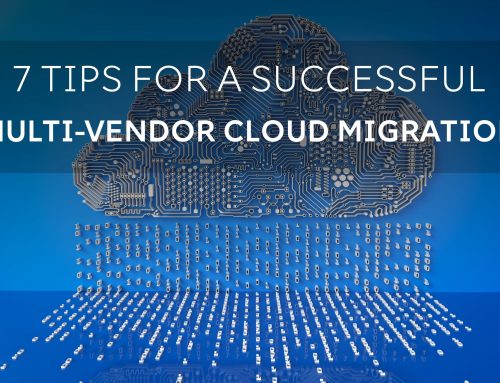Have you ever heard the saying, “Failure to plan is planning to fail”? This is a common adage that can be applied to many places and is no less true in cloud migration projects. Building a comprehensive cloud migration strategy starts with careful planning and consideration. Failing to adequately prepare for a migration can mean serious complications, missed opportunities, and extra expenses.
After years of completing migration projects for clients of all sizes and in all industries, we’ve learned the top considerations to think through as you build your migration strategy.
1. Define what migration success would look like for your organization
“Our goals can only be reached through a vehicle of a plan, in which we must fervently believe, and upon which we must vigorously act. There is no other route to success.” —Pablo Picasso
When beginning the migration planning process, it’s important to first decide what success looks like for your organization. Every organization’s needs and goals are different. Maybe a migration can help solve bottlenecks or offer new capabilities. Or, perhaps it is about reducing capital expenditures on IT equipment. In any case, defining what you want to get out of the migration will greatly inform the migration strategy you decide upon.
2. Know why you’re migrating and establish goals for your migration strategy
“If you don’t know where you’re going, any road will get you there.” – Lewis Carroll
It may seem surprising, but often clients don’t come to us with a clear business case for migrating to a new environment. Stakeholders know that migrating will benefit the organization, but can’t articulate specific business reasons or goals. Addressing this question through a Cloud Readiness Workshop or internal discussions will help pave the path of your migration journey so that a proper migration plan can address all of your organization’s must-haves.
Every stakeholder will have a different priority and ideas on how to implement whatever strategy comes to fruition. Deciding what priorities are most important and coming to a general consensus regarding the business case for migration will help craft a migration strategy that will hopefully satisfy everyone.
3. What provider(s) will you use
“Every once in a while, a new technology, an old problem, and a big idea turn into an innovation.” – Dean Kamen
There are many options out there for hosting servers and workloads. From public cloud to private cloud to on-prem, where you build and host your environment is dependent on the business goals you outlined during the beginning stages of planning, your reoccurring budget, and what you’re hosting within your environment. Understanding the advantages of each type of cloud and host is important to getting migration right the first time.
There’s no one-size-fits-all provider or solution, and each solution has advantages and disadvantages. Among enterprises using the cloud, 81 percent use a multi-cloud strategy, with 51 percent of that group using a hybrid cloud, according to RightScale. Depending on your organization’s needs, goals, and workloads, a more complex migration strategy could be necessary.
4. What applications do you have and do they rely on each other?
“Temporary solutions often become permanent problems.” – Craig Bruce
Before developing a migration strategy, knowing what’s already in your environment and if there are any dependent applications is important. If you run a variety of different applications, don’t expect that a one size fits all approach to migration will lead to optimum results. A thorough discovery and assessment exercise helps reveal all of your environment’s workloads, applications, server data, and dependencies, simply everything you’d want to know before deciding what should move, where it should move to, and how to get it there. A well-planned approach that takes into account your entire application portfolio will lead to the best long-term results.
5. Application Performance Impact
“No problem can withstand the assault of sustained thinking.” – Voltaire
Moving an application to a new location can impact performance and security. For instance, if your organization is moving applications to the cloud, considering the locations of dependent systems, customers, and network bandwidth is important to ensure no issues with performance. Some applications may require refactoring to operate properly in the cloud. For this reason, some applications may stay in an on-prem environment, or you can choose to completely re-architect and redevelop their applications to be cloud-native. The decisions come down to budget, timeline, resources, and your ultimate goals.
No matter where you’re planning on migrating or what you have to migrate, planning the migration is often more important and more time consuming than the migration itself. Discovering the complexities and interdependencies of your environment is not an easy task and requires the right expertise. To get your migration right the first time and avoid mistakes, follow a thorough planning process that answers the questions above.
Need help planning your migration? WSM can lead you through the process or take your strategy and execute. Contact us today!







